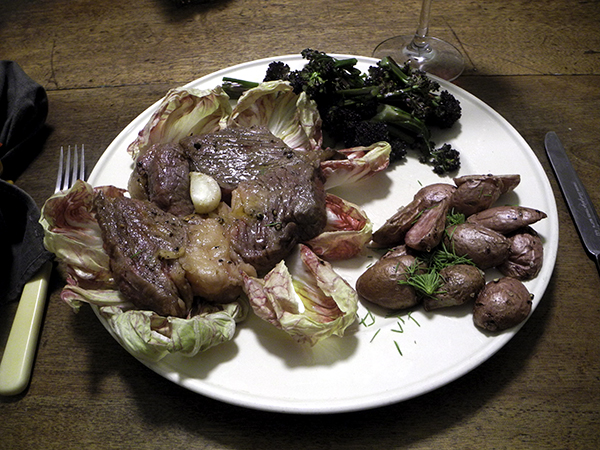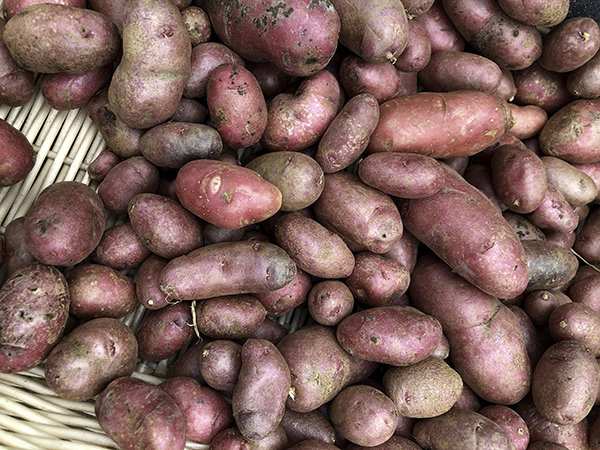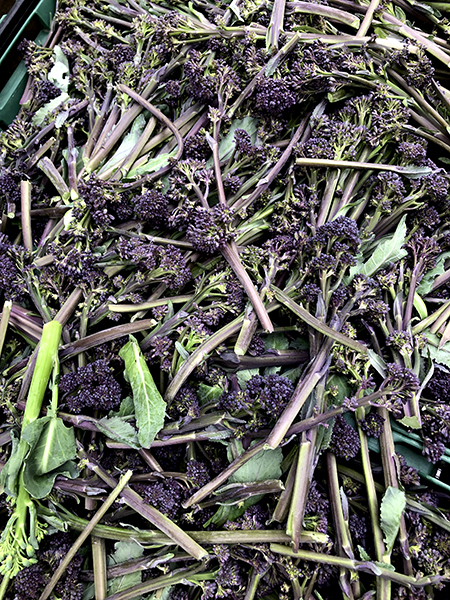
Steak. It takes all kinds. In the past I have generally favored cooking the kinds generally favored by others, with a very few exceptions for unusual cuts, but I honestly think it’s out of a preference for the neatness of a steak, both in its appearance on the plate and in the slicing of it. For these and for other reasons, like tenderness, which is absolutely not a priority for us, this means the cuts that are the most expensive.
I’ve been learning about some of the alternatives.
If it’s going to be about taste, there will have to be some side trips, with rewards well beyond the cost savings.
On Saturday it was time for a chuck steak. Actually the nomenclature, if not the cut itself, was a little more complicated than the familiar, often snubbed cut that the name suggests. It was a ‘boneless top blade steak’, something like a flat iron steak. That afternoon at our neighborhood Chelsea’s Down to Earth Farmers Market, I purchased the last piece of meat, of any kind, that Christopher Novak of Abundance Acres Farm had left. We discussed the cut (unfortunately most of what I thought I was learning at the time I’ve since forgotten, but I was impressed, enough that, although I didn’t really have to buy anything that day, I went home with a large steak (s’okay, there were no smaller ones).
I was told it was perfectly alright to cook it more or less dry, almost like any other steak. I checked on line, and was reassured, by this site and a few others.
- one 20-ounce Hereford-Angus breed boneless top blade steak from Abundance Acres Farm, located in South Arabia (don’t bother trying to Google ‘South Arabia’), Montgomery County, New York State, 5 miles north of the Mohawk River and 5 miles south of the foothills of the Adirondacks, at Chelsea’s Down to Earth Farmers Market, which is set up on Saturdays one block east of us in the spring through the fall, defrosted, brought to room temperature, both sides sprinkled generously with sea salt, freshly ground black pepper, one chopped spring garlic clove from Michisk’s Farm in Flemington, NJ, and a squeeze of juice from a Chelsea Whole Foods Market organic lemon, placed inside a heavy oval enameled cast iron pan already made hot over moderately high heat, in half a tablespoon of butter, a little less olive oil, and 2 whole cloves of the same garlic, sautéed 2 to 3 minutes on each side, or an internal temperature of 120-130º [because of the nature of the cut, it might be advisable to extend the cooking time, but only a bit, to come closer to ‘rare’], more lemon juice squeezed onto the steak just before it was removed from the heat, when it was allowed to rest, lightly covered, for at least 4 minutes before being transferred to the plate on top of a bed of leaves from one small head of radicchio (‘Italian chicory’), probably a variegata radicchio di lusia from Eckerton Hill Farm

- twelve ounces of small red thumb fingerlings from Tamarack Hollow Farm, halved lengthwise, tossed with a little olive oil, sea salt, freshly-ground black pepper, and a pinch of powdered home-dried habanada pepper, placed cut side down on a large Pampered Chef unglazed ceramic pan, roasted at about 375º for 20 minutes or so, arranged on the plates, cut spruce tops from Violet Hill Farm sprinkled on top

- about 10 ounces of purple sprouting broccoli from Campo Rosso Farm washed and drained a couple of times in fresh cold water, chopped roughly, sautéed or wilted over a low flame until the stems had softened by gradually being added to a heavy medium size antique copper pot in which one large chopped Michisk’s Farm spring garlic clove had first been heated until it had softened and become fragrant, seasoned with salt and black pepper and drizzled with a little olive oil
- the wine was a red (Côtes du Rhône) red, Jean-Louis Grande Réserve 2017, the gift of our friends Robert and Andrei, visiting from Berlin
- the music was the album, ‘Hilda Paredes: Señales’, with the Ensemble Signal